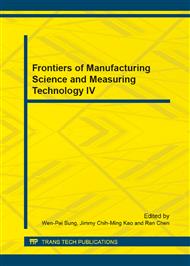p.1753
p.1757
p.1760
p.1764
p.1768
p.1772
p.1777
p.1781
p.1785
The Exploration and Implementation of the Interactive Multimedia Network Autonomous Learning Platform
Abstract:
In the paper the interactive multimedia network autonomous learning platform is analyzed, through which its use case diagram is presented. The autonomous learning platform consists of user register module, user login module, teacher profile module, discussion and Q/A module, online test module, learning video module, system introduction module, material download module and backstage administration module. Primarily, the design and development of the platform is meant to solve the problem of data exchange between database and pages. Data are updated or deleted when the data of pages are transmitted to backstage database. The implementation of the autonomous learning platform fulfills people’s urgent demands of the online education, settles the drawback that education and being educated in traditional approach cannot be conducted at different time and in different places, and enhances the efficiency of teacher’s teaching and students’ learning enormously as well.
Info:
Periodical:
Pages:
1768-1771
Citation:
Online since:
August 2014
Authors:
Keywords:
Price:
Сopyright:
© 2014 Trans Tech Publications Ltd. All Rights Reserved
Share:
Citation:


